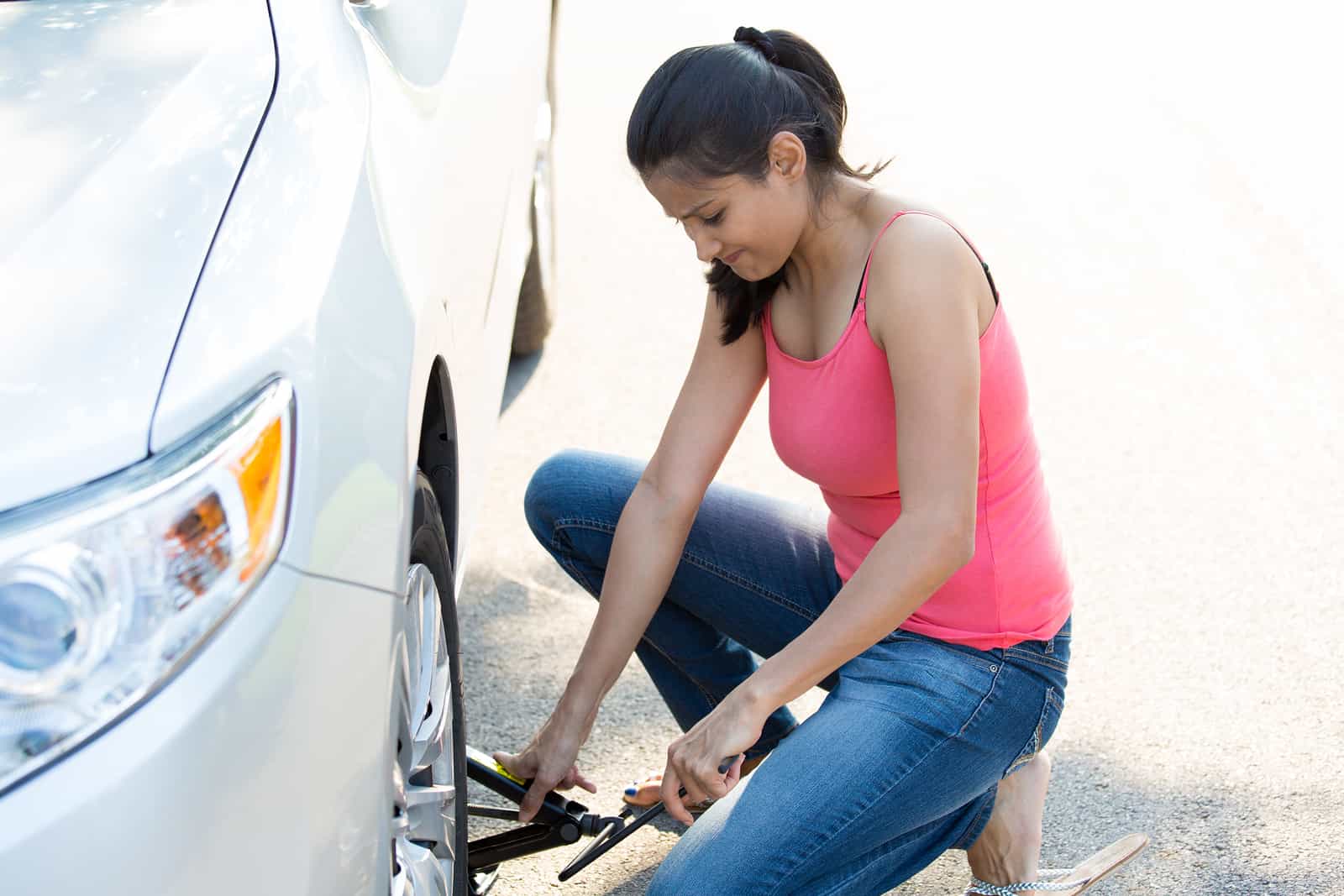
When you own a car, it’s only a matter of time until you run into some trouble. This bad situation becomes even worse when you don’t know what to do. To keep you safe on the road, we’re covering the solutions to common car problems.
Part of the fix to any car problem is preparation. Always have your car’s manual on hand. Keep a kit in your car that contains a toolset, jumper cables, a jack, emergency lights, cones, a safety vest, a first aid kit, and an empty gas container. Do not keep extra gas in your car as it can pose a safety hazard. Popular Mechanics has a comprehensive guide on building a preparedness kit.
Flat Tire
If you hear a strange thumping sound from your tire and realize it’s flat, look for a safe place to pull over. Turn on your emergency lights and use your handbrake.
Many cars come with a spare tire, a jack, and a wrench. If you don’t have these already, they are worth the investment. If your car does come with these and you’re willing to change the tire yourself, follow these steps:
- Remove the tire’s hubcap using a wrench.
- Put the jack underneath the frame of your car by the tire that needs to be replaced.
- Loosen the lug nuts on your tire, but don’t take them completely off just yet.
- Use the jack to lift the car.
- Take off the lug nuts and remove the tire.
- Put on your spare tire and secure it using the same lug nuts from the flat tire.
- Place the original tire in your vehicle so you can recycle or repair it later. Where and how the tire can be recycled will depend on your town’s regulations.
- Lower the car and drive away. To stay safe, you will need to drive carefully and slowly. Spare tires can only handle certain speeds.
- Replace or repair the flat tire as soon as possible, since spares are not meant for long distances.
While some flat tires are impossible to avoid (e.g., because of a puncture), you can decrease the likelihood of problems by rotating your tires every six months and replacing them every 25,000 to 50,000 miles. If you do get a flat tire, know you aren’t alone. AAA receives over four million calls about flat tires per year.
Smoke Coming out of the Engine
If smoke starts coming out from your hood, it’s likely that your engine is overheating.
- Pull over to a safe spot and turn off the engine. Let it cool off before popping the hood.
- Check your oil level (using the dipstick) and the coolant level in your radiator. If one is low, that likely caused your engine to overheat.
- Replace fluids, as appropriate.
- Once fluids have been replaced, you may resume driving.
However, if you recently replaced your coolant but the level is still low, there may be a leak in the radiator or the connecting lines. In this case, get towed to a mechanic instead. According to Angie’s List, if your lines need replacing you’ll only need to shell out $35 to $65. If the radiator has gone bad, that will cost you upwards of $300.
You should also get towed if you are unable to identify the issue or don’t have the appropriate replacement fluids on hand.
To prevent your engine from overheating in the future, be sure to check your fluid levels every month.
Car Dies While Driving
At some point, your car could just die. There are all kinds of reasons a car might die, and a professional can help you figure it out. Do not attempt to drive again, even if the car restarts. Some serious issues, like a faulty alternator, can come and go.
- Pull over to a safe spot and turn on your emergency lights. There will be leftover momentum that you can leverage to pull over safely. If you run out of momentum, you may need to place the car in neutral and push it.
- In some circumstances, you may need to put your hazard lights on and leave your car in the road, though this should be avoided if at all possible due to safety concerns.
- Set up emergency flares, if you have them.
- Call a tow truck to take you to a garage.
Even with routine maintenance, cars do run into problems. So it’s important to be prepared for your car to die. Keep your motor club membership, such as AAA, up to date and keep your phone charged.
Car Won’t Start
If your car won’t start, the battery is likely dead. Before running to a local auto store, try jumping your car DIY style.
- Find a working car to give you a jump.
- Turn off both cars and unplug all electronics.
- Take out a set of jumper cables and connect the two cars’ batteries using the instructions on the cables. The cars will need to stay connected for about five minutes.
- After receiving a jump, keep your car on for at least 20 minutes to allow the battery to charge. If you have an older battery or it is cold out, you may need to let the battery charge longer.
To keep your battery from dying, make sure your headlights and interior lights are off after leaving your car. Extreme weather drains your battery, too, so keep your car in a garage if possible. If you see warning signs of a weak battery (e.g., it takes a few tries to get the car started), consider a replacement before it dies completely. Mechanics say car batteries are designed to last about two to five years, depending on the vehicle, climate and battery type.
Replacing a battery is relatively inexpensive compared to other types of car maintenance. Prices vary by region and that does not always include installation. According to Angie’s List, battery costs can start as low as $50 and run as high as $200. Many auto parts stores will install the battery for free.
Be sure to study this advice and prepare your car with the necessary supplies. This way, you can confidently solve any of these common car problems when you’re on the road.






